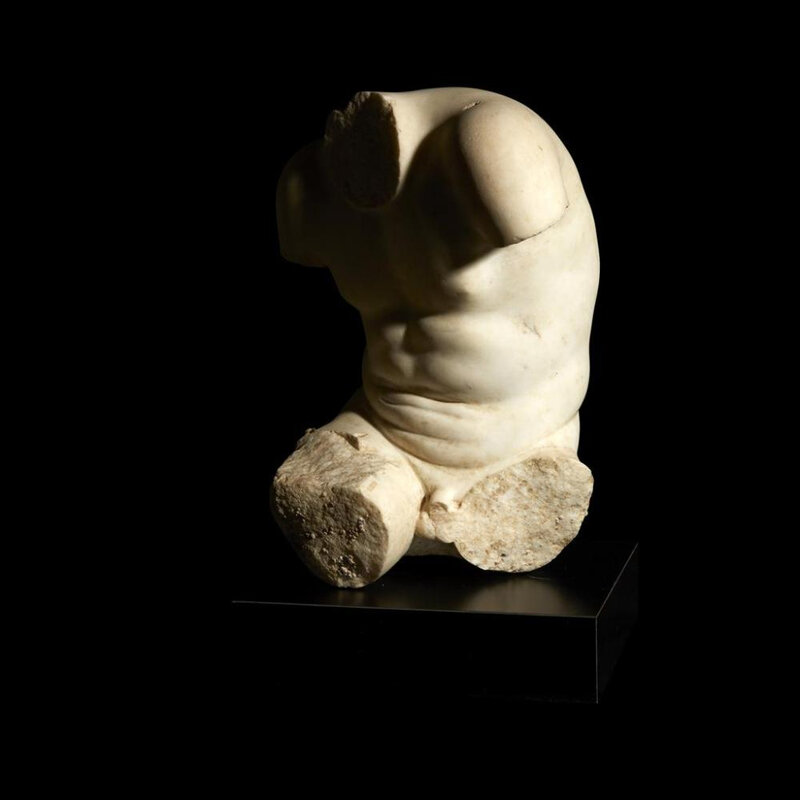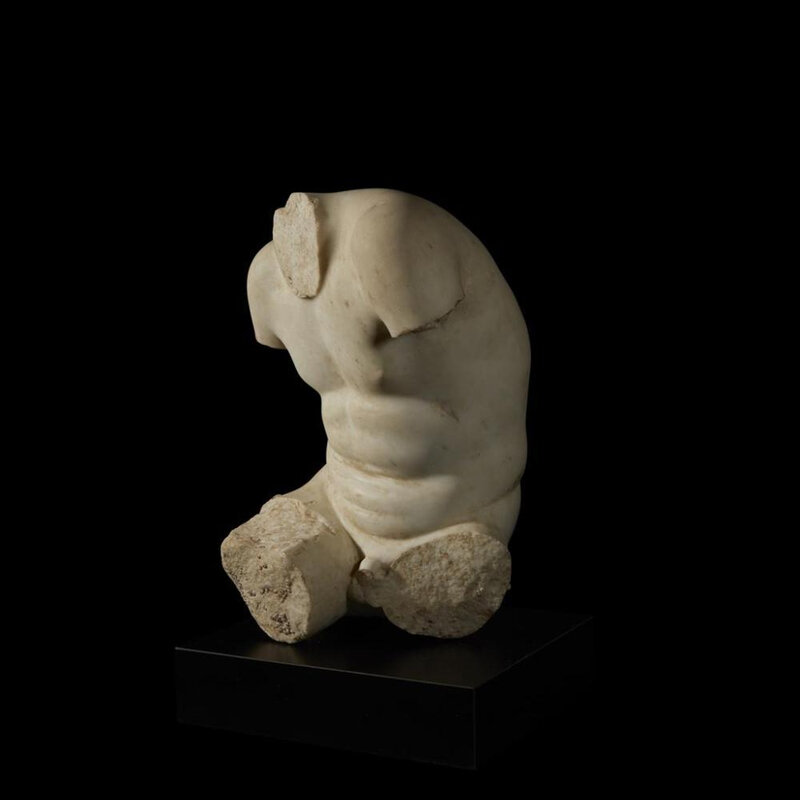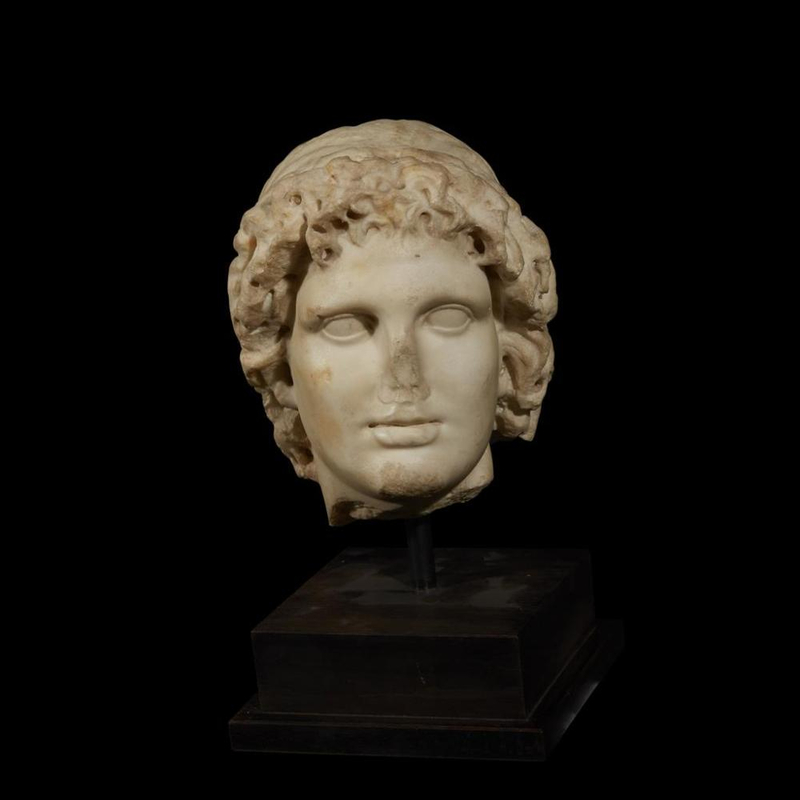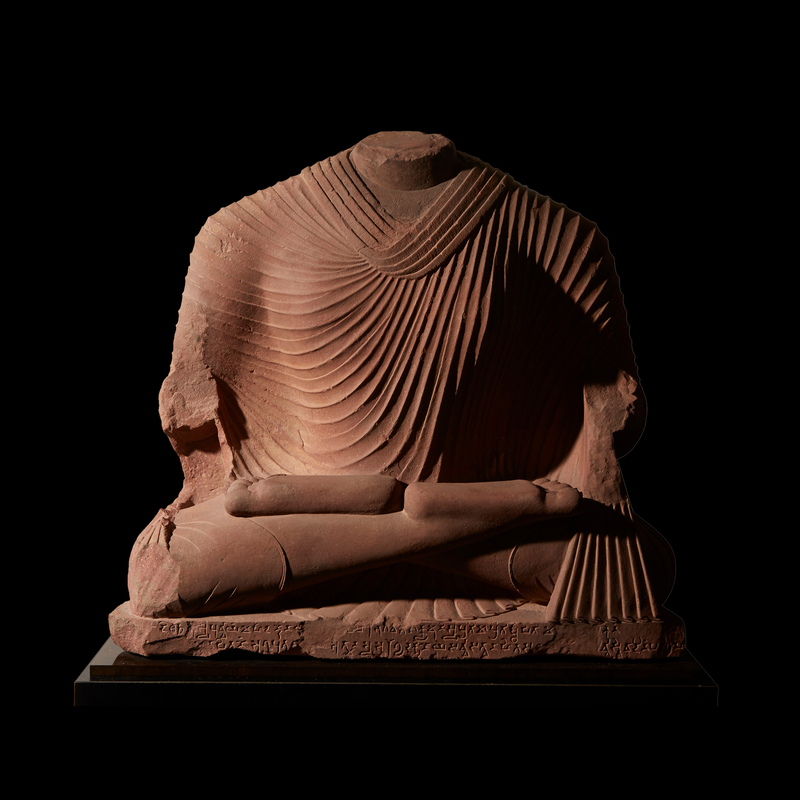Freeman's to offer the Jeff Hunter Collection of Antiquities & Tribal Art
PHILADELPHIA, PA.- On March 13, Freeman’s will offer selected antiquities and tribal art from the collection of New York and Hollywood talent agent Jeff Hunter (1926-2018).
Totaling just shy of fifty lots, The Jeff Hunter Collection represents a remarkable lifetime collecting ancient art. There is a spread across the millennia and across continents, but whether Greek idealism, the implied shapes of an ancient Anatolian idol, or the transformative qualities of an African Hemba mask, a constant theme is an interest in the human form. Hunter bought from high quality sources and the emergence of his collection represents an exciting moment for the market.
A particular highlight of this single-owner sale is a sensitively rendered 1st century AD Roman depiction of the “Spinario” (Lot 23, estimate: $30,000-50,000), that of the nude youth about to pull a thorn from his foot. The “Boy With Thorn” or “Spinario” is a celebrated form created in Greece in the 3rd century BC. From there it came to Rome, where it was widely copied and adapted. Unlike much of Roman and Hellenistic statuary, the story behind the original image is unclear; in the past it was argued that it depicted a faithful messenger, a shepherd boy, who had delivered his message to the Roman Senate first, only then stopping to remove a painful thorn from his foot. Others now argue it depicts the more prosaic theme of a boy removing the thorn after treading grapes. Whatever its original story, the image has for centuries been feted as a beautiful representation of the human body in complex action.at Santiago. A fantastic association.
A famous Roman example executed in bronze remained on display into the Middle Ages and Renaissance where it stood outside the Lateran Palace, drawing comment as early as the 1160’s. It ultimately became one of the first Roman sculptures to be copied in the early Renaissance, with notable bronze reductions by Severo da Ravenna and Antico. The present example dates from the late 1st century BC to early 1st century AD and is of a type known from a number of Roman and Hellenistic examples.
Lot 23. Roman Torso of the “Spinario,” 1st century BC-1st century AD, Carved marble, H: 19 in., Estimate: $30,000-50,000. Sold for $93,750. © Freeman's
Carved marble, the seated youth hunched slightly forward and turned to his right. His left leg (now lacking) would have been crossed over his right thigh to enable him to remove a thorn from his foot. Raised on a bespoke mount.
Provenance: Christie's, New York, 7th December 2000, lot 571.
with Royal-Athena Galleries, New York, 2000, inventory number CNF73, (copy of the original purchase invoice to be included).
The Jeff Hunter Collection, New York.
Note: The "Boy With Thorn" or "Spinario", that of a seated boy extracting a thorn from the bottom of his foot, is a celebrated form created in Greece in the 3rd century BC. From there it came to Rome, where it was widely copied and adapted. Unlike much of Roman and Hellenistic statuary, the story behind the original image is unclear; in the past it was argued that it depicted a faithful messenger, a shepherd boy, who had delivered his message to the Roman Senate first, only then stopping to remove a painful thorn from his foot. Others now argue it depicts the more prosaic theme of a boy removing the thorn after treading grapes. Whatever its original story, the image has for centuries been feted as a beautiful representation of the human body in complex action.
A famous Roman example executed in bronze remained on display into the Middle Ages and Renaissance where it stood outside the Lateran Palace, drawing comment as early as the 1160's. It ultimately became one of the first Roman sculptures to be copied in the early Renaissance, with notable bronze reductions by Severo da Ravenna and Antico.
The present example dates late the late 1st century BC to early 1st century AD and is of a type known from a number of Roman and Hellenistic examples. For comparison see an example in the Baltimore Museum of Art, no. 152 in Vermeule.
Other notable lots include a Roman carved marble head of Alexander the Great as Helios, c. 2nd century AD (Lot 30, estimate: $10,000-15,000); a Roman carved marble life-sized torso of Diomedes, 1st century AD (Lot 34, estimate: $20,000-30,000); and an over life-sized pink sandstone sculpture of Buddha, Mathura, Kushana Period 1st-2nd century AD (Lot 39, estimate: $30,000-50,000).
Lot 30. Roman head of Alexander the Great as Helios, c. 2nd century AD, Carved marble, H: 11.2, W: 5.9 in. (mounted). Estimate: $10,000-15,000. Sold for $62,500. © Freeman's
Carved marble, Alexander's youthful face is framed by curled hair held in place by a fillet, which is provided with drillholes to receive a radiate headdress, raised on a bespoke mount.
Provenance: François Antonovich, Paris.
with Royal-Athena Galleries, New York, 2005, inventory number CLC412, (copy of the original purchase invoice to be included).
The Jeff Hunter Collection, New York.
Literature: Antonovich, F., 1996. Les metamorphoses divines d'Alexandre. Pp. 88 & 344.
Lot 34. Roman marble life-sized torso of Diomedes, 1st century AD., Carved marble, H: 32 in. Estimate: $20,000-30,000. Sold for $106,250. © Freeman's
Carved marble, shown standing, wearing a chlamys fastened on the left shoulder, the musculature well defined. After a Greek work of the late 5th century B.C. Mounted onto a bespoke plinth.
Provenance: with Royal-Athena Galleries, New York, 1991, inventory number HFC33, (copy of the original purchase invoice to be included).
The Jeff Hunter Collection, New York.
Carved marble, shown standing, wearing a chlamys fastened on the left shoulder, the musculature well defined. After a Greek work of the late 5th century B.C. Mounted onto a bespoke plinth.
Provenance: with Royal-Athena Galleries, New York, 1991, inventory number HFC33, (copy of the original purchase invoice to be included).
The Jeff Hunter Collection, New York.
Lot 39. Over life-sized sculpture of Buddha, Mathura, Kushana period, 1st - 2nd century AD, Pink sandstone, H: 37, W: 40 in. (mounted), Estimate: $30,000-50,000. Sold for $59,375. © Freeman's
Pink sandstone, shown with the legs crossed tightly in the padmasana meditative position, he wears a simple robe which loosely reveals the contours of the body. The folds of the cloth are deeply incised to create an arresting visual effect. The inscription below reads as follows:
'[year and month missing -] day 10; on this day, the Commander-in-Chief, [name illegible], established this image of Sakyamuni for the principle benefit of his mother and father; [and] for the sake of his own health and well being; [and] for the happiness and welfare of all beings, [given] into the possession of [the masters] of the Sarvastivadin [school].'
Provenance: Arnold Lieberman, New York
The Jeff Hunter Collection, New York.
Hunter was a founding partner of Triad Artists before becoming the SVP of Motion Picture Talent at William Morris Endeavor, where he represented some of the biggest names in the business. Among his roster of renowned clients were actors Marlene Dietrich, Montgomery Clift, Barbara Streisand, and Whoopi Goldberg. Hunter was responsible for discovering Kevin Kline and Morgan Freeman. Casting Director Bonnie Timmermann, in an interview for Deadline Hollywood, remarked, “He [Jeff] gave everything to his clients and fought fiercely for each of them. That was his life.”
Born in 1926, Hunter briefly studied to become a doctor before taking a job as a copy editor at a talent agency. The rest, as they say, is history.
Hunter died in January 2018 at the age of 91.

/https%3A%2F%2Fprofilepics.canalblog.com%2Fprofilepics%2F1%2F0%2F100183.jpg)
/https%3A%2F%2Fstorage.canalblog.com%2F03%2F02%2F119589%2F96711876_o.jpg)
/https%3A%2F%2Fstorage.canalblog.com%2F11%2F31%2F119589%2F94773502_o.jpg)
/https%3A%2F%2Fstorage.canalblog.com%2F20%2F83%2F119589%2F94772815_o.jpg)
/https%3A%2F%2Fstorage.canalblog.com%2F26%2F72%2F119589%2F75604929_o.jpg)
/https%3A%2F%2Fstorage.canalblog.com%2F59%2F60%2F119589%2F26458628_o.jpg)

















/image%2F1371349%2F20240417%2Fob_9708e8_telechargement.jpg)
/image%2F1371349%2F20240412%2Fob_032fb1_2024-nyr-22642-0928-000-a-rare-painted.jpg)
/http%3A%2F%2Fstorage.canalblog.com%2F37%2F38%2F119589%2F129773469_o.jpg)
/http%3A%2F%2Fstorage.canalblog.com%2F50%2F43%2F119589%2F129706599_o.jpg)